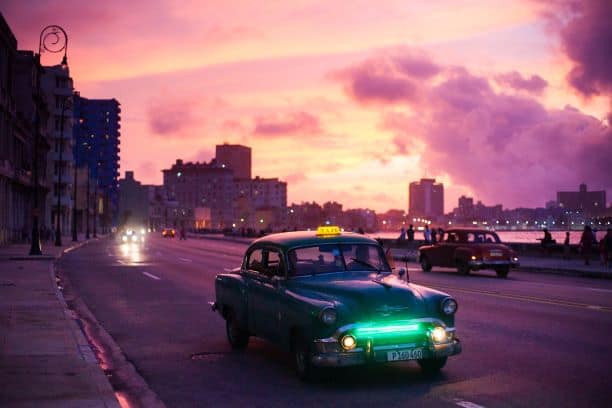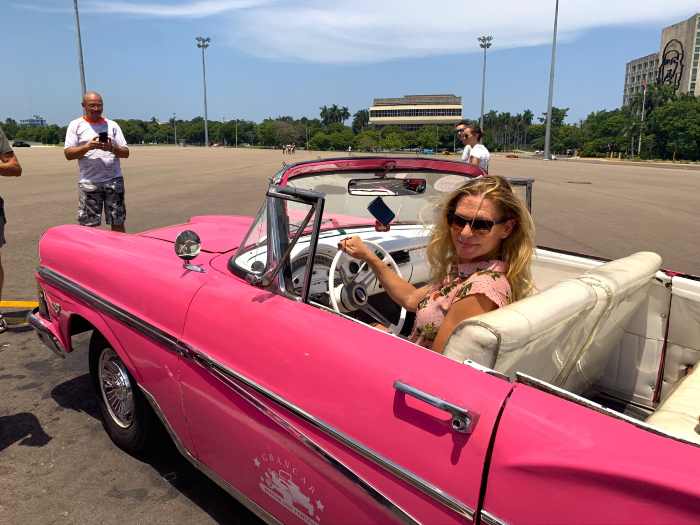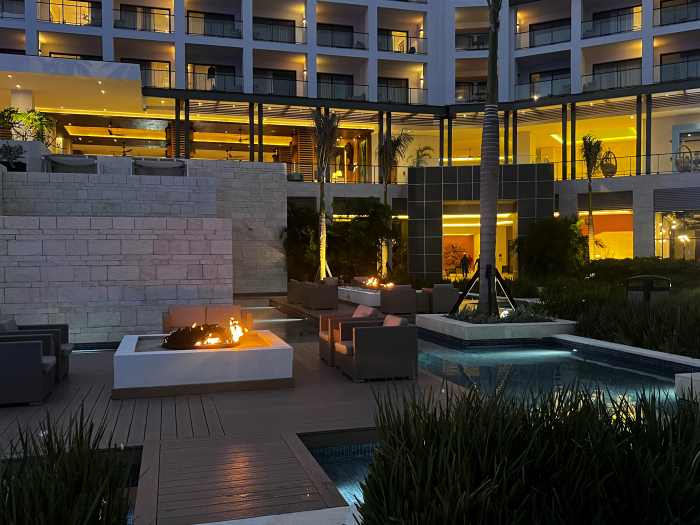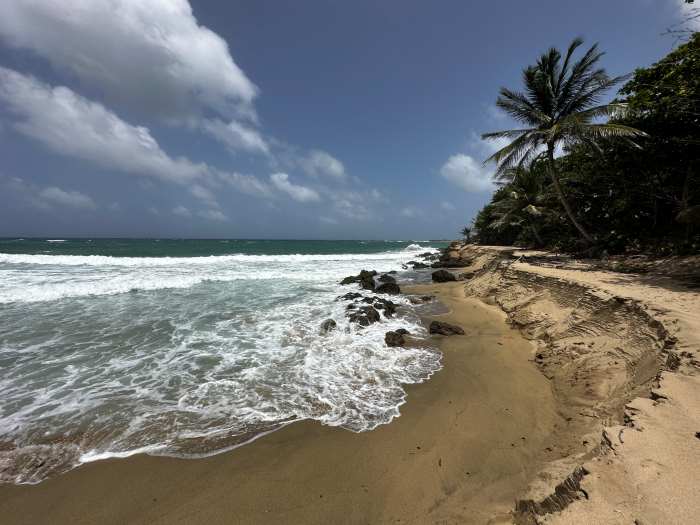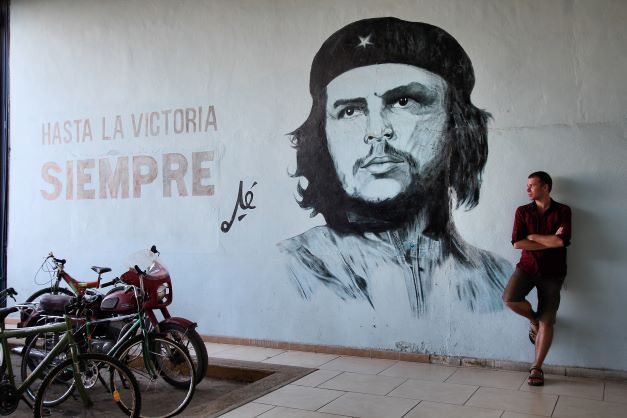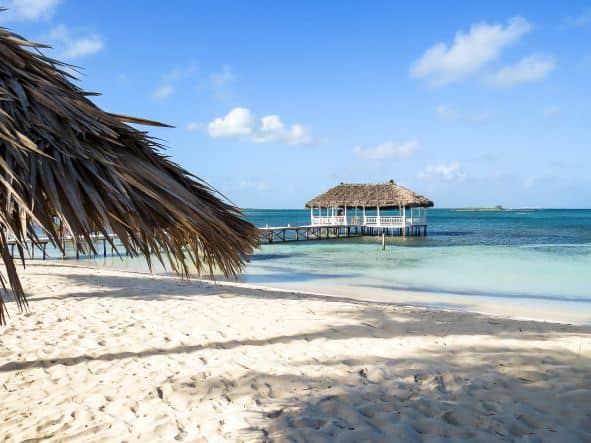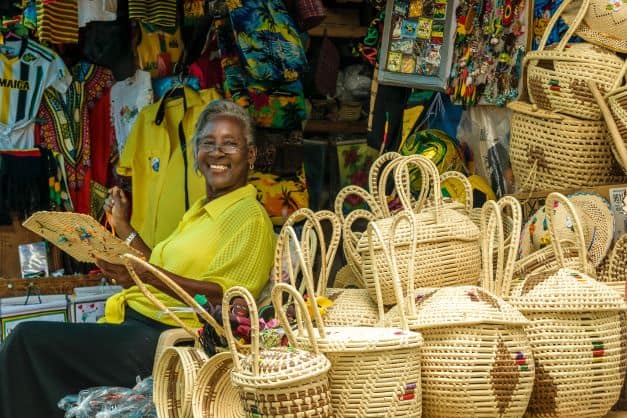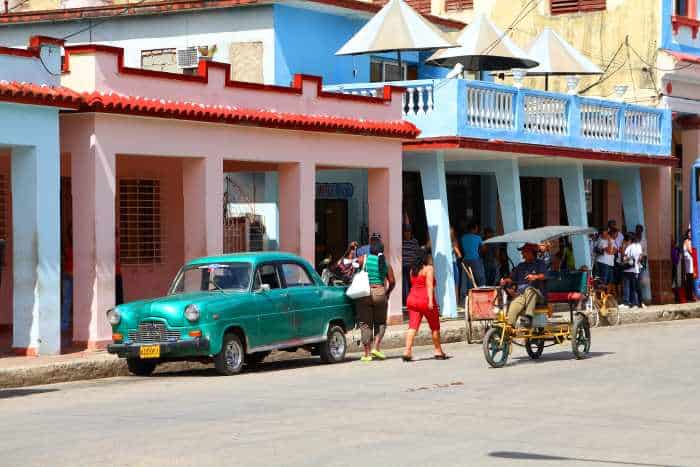Interesting Facts About Havana Cuba From A Local | District Guide 2024!
There are a lot of interesting facts about Havana to know, probably more than you think. Arriving in Havana, Cuba, for the first time still is a bit like entering into a parallel world.
Maybe it sounds a bit dramatic, but it only takes you minutes to find out that many of the amenities you are used to having almost anywhere else are not readily available here.
Havana is a city that is living in six different decades at the same time, where utter beauty, gorgeous architectural details, and grandiose art are side by side with decay and chaos.
I have traveled to Cuba regularly for five years, and I have learned the ins and outs of living and traveling in Havana and Cuba. So now I can share it with you.

Interesting Facts About Havana
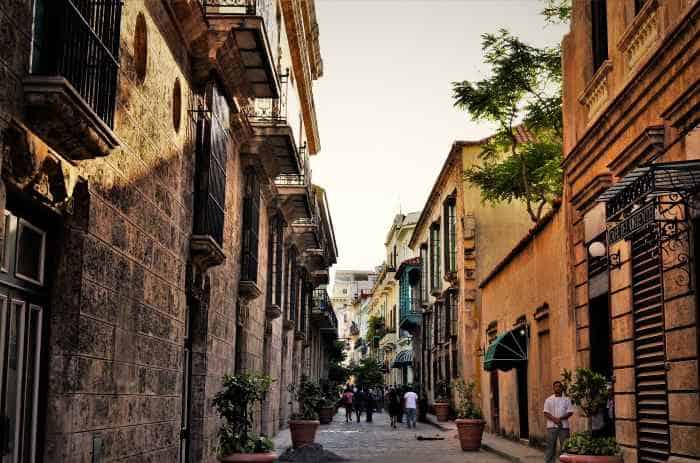
The capital of Cuba is a colonial town shrouded in mystery for many of us foreigners, with over 500 years of motley colonial history in its tracks.
With around two million inhabitants, it is a metropolis, the economic, political, and cultural center of Cuba.
As I have traveled here regularly for five years, staying for long periods, I have started getting a little insight into some of the unique things about the Cuban capital that are not immediately obvious when you travel here for a holiday.
Havana is the name of both the city and the province, situated on the northwest part of the main island.

The city is visibly influenced by 300 years of colonial rule, the 20th century`s political turmoil, the Cuban revolution, the bumpy relationship with the US, and international incidents.
Like the infamous missile crises and failed US invasion in the 60ies. There are traces of history wherever you go.
Bright and pale colors fluctuate houses, cars, and people, among drying laundry and flowers, restored facades, and rubble.
You will find bicycle taxis all over Old Havana and huge American cars from the fifties negotiating narrow streets or flying down avenues.
The city is divided into different districts, which again are divided into neighborhoods or barrios in Spanish.
Havana City Districts
There are 15 municipalities in Havana, but not all of them are interesting to you as a tourist.
Below are the most important districts you need to know, along with a little history and interesting facts about each area.
Interesting Facts About Havana Old City
La Habana Vieja, Old Havana, is the original part of the city. I normally choose to stay here when I am in Cuba, as this is the most interesting part, although it is also noisy and loud.
This is the historic city where the Spanish started building in 1519, just over 500 years ago, and this part of Havana is now protected on the UNESCO World Heritage Site list.
Entering the narrow streets, beautiful but often run-down houses surround you, and there are people, dogs, and cats everywhere.
Habaneros sell fruit, vegetables, drinks, and sandwiches on the streets, in shops and cafes, and in doorways. They speak loudly to each other and to you in super-fast Spanish full of Cuban slang.
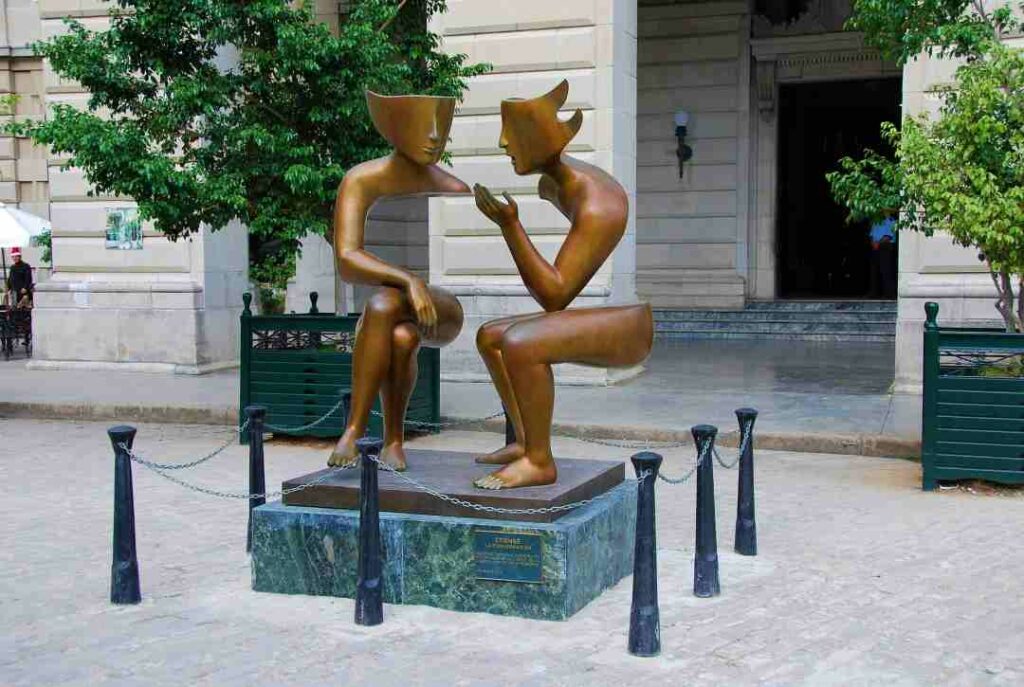
You can also get a Cuba libre, a Mojito, or a taste of the local rum almost anywhere.
There are many bars and restaurants throughout Old Havana, often with colorful interiors, eclectic art and paintings, and artifacts implying a connection to the revolution.
Numerous art galleries are scattered throughout, and music and random dancing can be heard and seen anywhere.
Originally, a thick wall was built around the city, but today, only remnants remain. You can find traces of it here and there, and they are the telltales of where Old Havana ends, and the newer part begins.
Old Havana is also a busy residential area today. It has the second-highest population density in the capital, with around 100,000 inhabitants in a very small space.
So, if you have the impression that Old Havana is only for tourists, you are mistaken.
Influenced By The Spanish Colonial Rulers

Many beautiful colonial buildings fell into decay in the last half of the 20th century, but a project started in the ’90s is revitalizing many of them.
The “Cuban Special Period” started after the fall of the Soviet Union, a time when the Cuban economy deteriorated dramatically, and the city fell into decay.
The rejuvenation project has had a lot of positive ripple effects on the communities in Havana, which you can read more about here.
Especially in the areas around Plaza Vieja, you find newly restored buildings painted in bright colors, surrounded by flowers, and covered in beautiful ornaments.
In the 16th Century, Havana became an important harbor for the treasure-laden Spanish galleons traveling between the New World and the Old World.
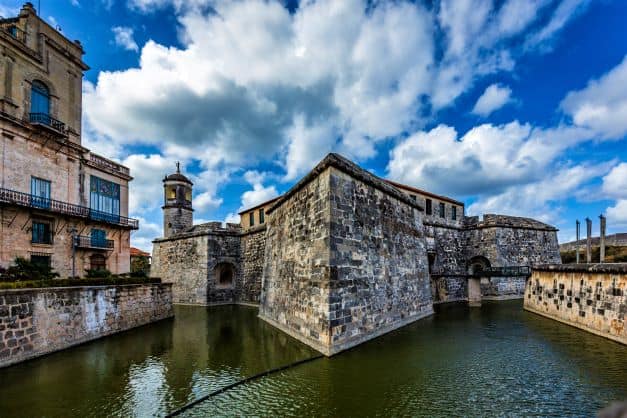
Then, in 1555, Old Havana was destroyed by a French pirate named Jacques de Sores. He overtook the poorly protected Havana super easily, plundered the city, and burnt much of it to the ground.
Pirate Jacques (who was a privateer for the French king) had the nickname “The Exterminating Angel,” so it is safe to assume the ordeal was somewhat violent.
After this incident, the Spanish realized they needed to protect the city and started building fortresses and walls.
First, they constructed the Castillo de la Real Fuerza in Old Havana, followed by several others around the shore and entrance to the harbor that still stands and is open for visiting history buffs.
The entire Old City was inscribed on the UNESCO World Heritage list in 1982 because of its unique baroque and neoclassical architecture, fortifications, and historical importance as a stop on the route from Europe to the New World.
The Vast History Of Old Havana
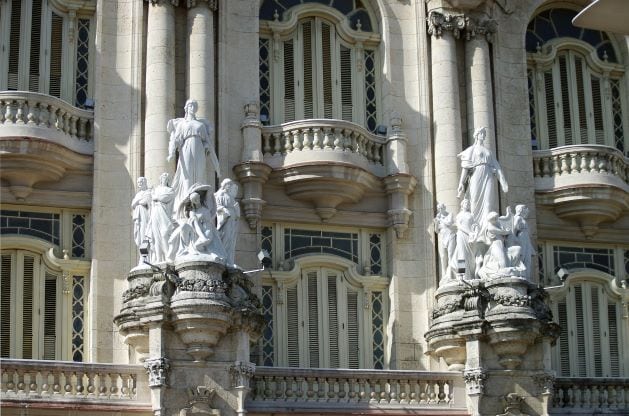
Within Old Havana are all the big ancient monuments, the convents, the churches, the palaces, the alleys, the arcade, and the monuments.
The Cuban government has made a huge effort in recent decades to restore Old Havana through the Office of History, but also with outside help.
Prado Avenue separates the Old City from the Central Havana district and runs from the Capitolio, the old parliament, to the sea.
The houses along the Prado used to be one of the best parts of the city centuries ago, where the wealthy and fortunate people used to live in grand mansions.
Today, these houses are also generally run-down but still present in the ancient beauty of their original facades.
When you stroll down the Prado towards the sea, you see straight across the bay to the fortress El Morro, which has guarded the entrance to Havana for centuries.
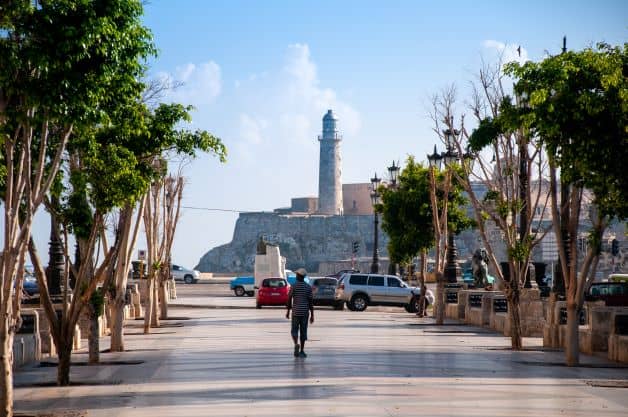
This is also where the Malecon starts, the stonewall along the sea that runs for 8 kilometers along the water.
The beautiful wide avenues from the colonial era with the large mansions from centuries ago, like the Prado in Havana, tell the tale of the fortunes of some of its residents.
Minutes away, you find the narrow cobblestone streets of Old Havana with large Cuban families living crowded, tight on top of each other today.
In 2008, Hurricane Ike destroyed much of the infrastructure in Old Havana, overturning years of conservation work on the iconic antiquated buildings.
Not only did it damage historic buildings, serving as a setback to the renovation, but it forced many of Old Havana’s residents to flee for safety. The effort, however, continues.
Central Havana

Centro Habana, or Central Havana, is the area west of Old Havana, towards the modern district Vedado, which grew up around 450 years ago.
It looks similar to Old Havana with narrow streets and colonial-style apartment buildings, but without the grandiose feel of ornate houses, avenues, and (that many) art-ornate squares of the original settlement.
The whole area was a popular shopping destination before the revolution, and there were large department stores here into the 1950s.
There still are many shops in the area, like Plaza de Carlos III commercial center, and shops and cafes in the streets of San Rafael and Galiano.
Online photos look really inviting, but the standard and item selection of today’s shops is probably a little scarce. There are also lots of casa particulares, hotels, bars, and some clubs in the streets of Centro Habana.
Casa de la Musica is on Galliano Street, and the district has a Chinatown, Barrio Chino, bordering the Malecon.
What Is A Casa Particular?
A casa particular is a privately owned home rented out by a Cuban family, where you can live like a Cuban, closer to the real Cuba!
Little Havana And Big Politics

The area heavily deteriorated during the “special period” in the 1990s after the collapse of the Soviet Union.
The Soviets were Cuba’s main trade partner at the time, and the collapse of the superpower hit Cuba hard. Although there has been an effort of restoration here as well, the area has an aura of decay but still a certain charm.
Walking in the streets of Centro Habana, you will see more habaneros and fewer tourists.
People are out to get groceries or hacer negocio, so don’t be surprised if someone offers you to buy eggs or onions on the street around here.
If you happen to need anything you are offered, payment in $$$ also probably will be very appreciated.
Vedado – The Modern District
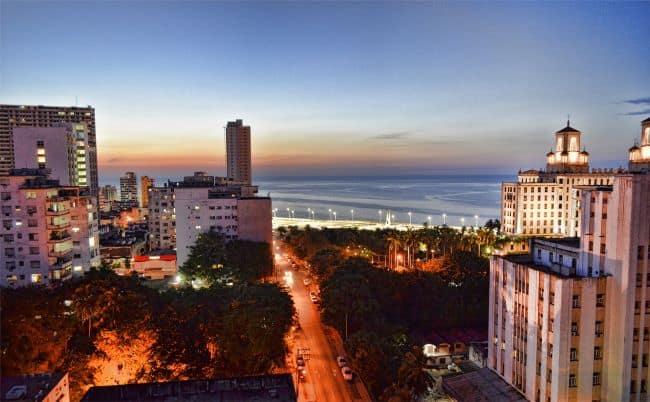
If you keep walking west along San Rafael Street, you will end up right on the grounds of the University of Havana.
This is on the outskirts of the Vedado district, and in this vicinity, there are also many museums and parks. Vedado started as a military area under the Spanish colonial rule.
That is where the name comes from, “Vedado” means “forbidden” in Spanish!
This area is described as a central business district and urban neighborhood in Havana, and it has a more upscale, high-end feel to it, as well as being more spacious and modern.
It developed in the first half of the 20th century, during the so-called Republic period (1902-1959), after the war with the Spanish, and before the revolution.

In the decades after Spain lost the 1898 Spanish-American war, Vedado was transformed by American investors and those benefitting from Cuba’s sugar trade boom into a decadent and luxurious space.
The residential development began in the mid-1850s and was given a characteristic grid system.
The streets have numbers and letters instead of names, making it one of the easiest places in Cuba for foreigners (and Cubans) to navigate (unlike Old Havana, which is a nightmare for both categories).
The Spacious Streets And Parks Of The Vedado
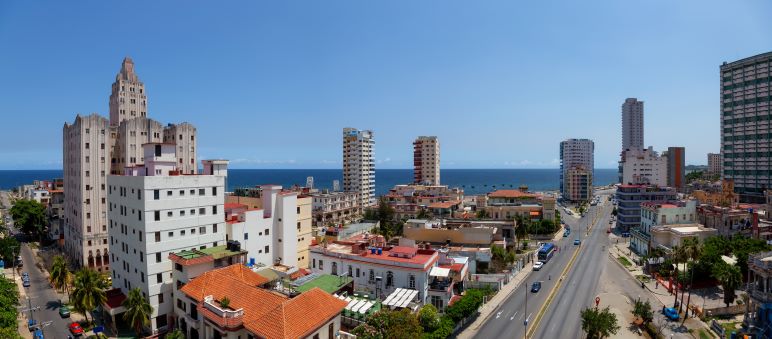
The main street is Avenida 23, also known as “La Rampa,” a wide, airy street where you will find restaurants, bars, and a lot of life.
On the corner of Avenida 23, y Calle L is where you find the famous cinema Cine Yara and the Coppelia ice cream parlor.
Today, there are loads of super-nice mansions in this area, embassies, parks, several-story houses with gardens, and artsy ornaments.
You find landmark structures like the Hotel Nacional, the Capri, and the Riviera here, towering odes to the 1950s, a period in Cuba’s history notoriously steeped in opulence, gambling, and corruption.
Meyer Lansky (a famous American mobster, called “the Mob`s accountant”) owned the Riviera before it was nationalized after the 1959 revolution.
Other U.S. mobsters ran casinos, while a decorated string of Hollywood stars regularly frequented places like the famous Hotel Nacional.
Before the revolution, Vedado, Havana, Cuba was “the place to be” for the rich and famous of the world!
The West End: Miramar And Playa

Miramar is the “uppest” upper-class area of Havana today.
The westernmost residential area of Havana has been the home to the high class of Cuban society since its development.
Little by little, the wealthy of Havana ventured west to satisfy their need for mansions and large parks as the original city areas became more populated and slowly crowded.
The majestic mansions here have pools, large gardens, and all kinds of luxury amenities.
Many spas were built, and private yacht clubs, beach clubs, and large elegant stores were where wealth and economic power were not hidden at all.
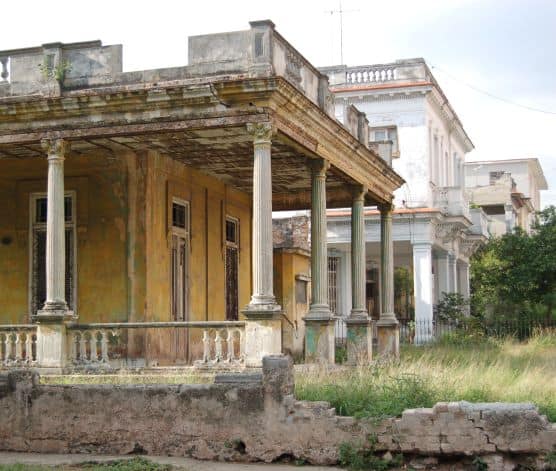
After Fidel marched in and decided on a communist society, a lot of the then upper-class Cubans and foreigners abandoned their properties in Miramar and went to the United States.
The area has since continued to be home to the higher classes despite the idea of a classless society, this time to a large portion of Cuban government officials and managers of the post-revolutionary period.
Here, you will find some of the most luxurious hotels on the island, which is why it is popular with foreign tourists on Caribbean vacations.
You can spend time by the pool, on the beach, or simply enjoying the nightlife. Miramar has several salsa clubs, restaurants, and entertainment options.
Other tourist attractions are the Museum of the Ministry of Interior, Miramar Parks, and the famous church named the Church of Jesus de Miramar.
Miramar is the economic capital of Cuba today. It hosts investment companies, banks, hotels, and joint ventures. Although the area around Plaza de la Revolucion houses many ministries, a lot of important decisions are taken in Miramar.
Further west of Miramar is also Jaimanitas, where the street art barrio of Fusterlandia is located.
Fifth Avenue Miramar

The Quinta Avenida, Fifth Avenue in Miramar, is considered the most beautiful avenue of its time.
The construction of Fifth Avenue was decisive for the development of the Miramar district.
It runs for about ten kilometers along the coast and has a beautiful wide pedestrian zone in the middle of the road, encircled by trees and plants.
It is a popular stretch for running, going for a walk, or taking a break under the trees.
The avenue emerges from the tunnel that connects Miramar to Vedado and ends at the Santa Ana River in the Santa Fe District to the west.
Habana Del Este
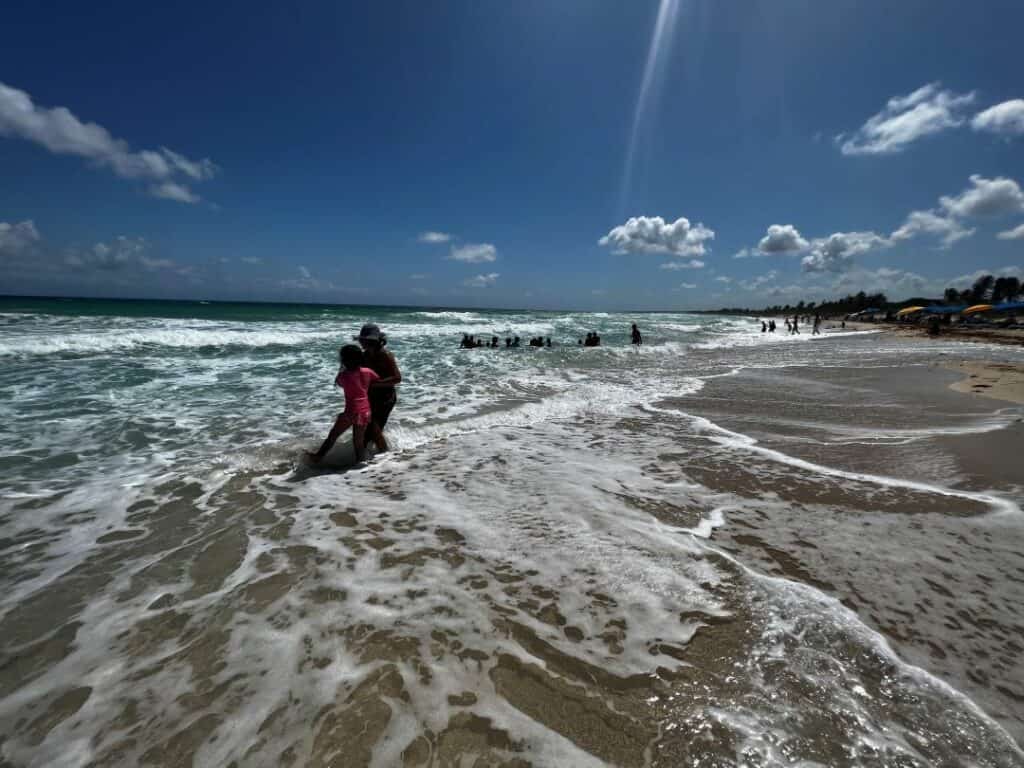
East Havana, Habana del Este, is, as its name implies, an eastern area in Havana. From Old Havana, you take the tunnel out of the city and turn east along the coast.
Habana del Este includes the towns of Camilo Cienfuegos and Alamar, as well as the beach towns of Boca Ciega, Tarará, Santa María del Mar, and Guanabo.
The beaches in this area are also commonly referred to as Playas del Este and are a string of beaches running for more than 20 kilometers along the coastline.
Some of the most beautiful and popular beaches in Habana del Este are Bacuranao, Santa María del Mar, Boca Ciega, La Veneciana, and Brisas del Mar.
The eastern beaches are also popular tourist spots, although not as much visited as Varadero, Trinidad, and other Cuban beach destinations.
There are a variety of hotels and casas in Habana del Este, but you need to be aware that the standards in this area are somewhat outdated. The hotels along the coast have a Soviet-aura feel in every corner and a timeworn and run-down appearance.
Also, the beach infrastructure is not great, and there are not many beach bars or restaurants to keep you refreshed, so bring a lunch basket!
If you find the authentic and historically correct ambiance charming, you will probably enjoy it here.
Havana Architecture
Havana is home to some of the world’s most unique architecture. The city was founded by the Spanish around 500 years ago, and the earliest architecture reflects the medieval Spanish style.
Over the centuries, Havana has undergone many architectural changes, and you can also find traces of Greek, Italian, and Roman styles throughout the city.
What Does Havana Feel Like?
The days in Havana are hot, busy, and noisy, and so are the evenings. The only real difference is that the music is louder, and the heels are higher during the dark Caribbean hours.
Life in the streets, en las calles, is intense and immediate, and there is little separation between inside and outside in Havana. People will chat by standing on their balconies, speaking to neighbors to the side, above or below.
The catholic church in Havana is situated only a stone’s throw away from the Santeria «church,» where the priests and priestesses dance to Afro-Cuban rhythms into the heavens on Sundays.
Like they say in the alternative travel guide to Cuba, Cubaconga, «Cuba starts where the logic ends!».
Unique Things To Do In Havana!

Many people choose to take their holiday in a fancy resort in Varadero or the Keys when visiting Cuba and leave just a couple of days to explore Havana.
That is a lot better than nothing, but being a wannabe habanera I am an advocate for making your visit to Havana a little longer.
I would say rent a house, talk to the habaneros, walk the streets, and take in the ambiance for a week!
It will take you a while to tune into the city’s vibe and fall into the rhythm.
Where To Stay In Havana
When pondering where to stay in Havana, you find a wide range of different standards and prices for hotels, hostels, and casa particulares. It all depends on your preferences and budget.
Also, as you have seen above, the various districts of the city offer slightly different neighborhoods if that is of importance to you. Spend a few days in a casa particular, a private house of a Cuban family, and get to know them.
The main city districts in Havana are:
- Old Havana
- Central Havana
- The Vedado
- Miramar and Playa
- Plaza, with Plaza de la Revolucion
- Habana del Este (fewer tourists go here)
Also read: Where To Stay In Havana From A Local
You will normally be offered breakfast in-house ($5), which your host will bring to you or come around and make it while you chill on your terrace in the morning.
Then, you can spend a couple of nights in one of the historic or spectacular hotels in Havana, such as the Hotel Nacional, the Ambos Mundos, or the Manzana Kempinski.
Or maybe one of the resort-like hotels outside the city center close to the beach?
Your hotel or hosts will also be able to give you current advice on what’s on and tips for what to do and not to do. You can also practice your Cuban Spanish, at least a few phrases, to “survive” in the streets.
There are also very nice hostels where you can stay, categorized as three-star hotels, not anything like one would normally consider hostel standards.
Like the Malecon663, which is packed with an eclectic interior and crazy details, it also has a rooftop bar and restaurant with a glass jacuzzi and a spectacular view over the sea!
Vibrant Havana Nightlife
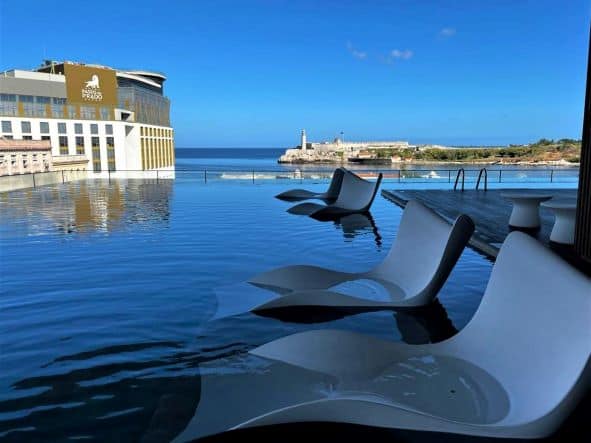
If there is one thing Havana is famous for, it`s its vibrant Cuban-style Caribbean vibe nightlife.
The nightclubs and bars are as colorful and chaotic as the city itself, and whatever nightly entertainment you are looking for you will find it here.
Also Read: Havana Nightlife Guide | Ultimate Overview!
Best Time To Visit Havana
Although July and August are high seasons for tourists to visit Cuba, these months are HOT and might not be the best for an active and explorative city holiday.
The temperature and humidity mid-summer are far up on the red part of the scale.
You probably already know what it is like on a big-city holiday in July, queueing up with all the other tourists to do what you have decided you want to do.
Havana is no different, just a lot hotter!
My favorite seasons in Havana are April- June and late August through September. It’s still buzzing and still warm but not that crowded, and you don`t need to change clothes three times a day.
That aside, bring a lot of water and light clothes, and you will be able to enjoy the city any time. The beaches are absolutely best in the summer, but of course, that is what everyone else thinks too.
The sights, restaurants, and remnants of history are there all year, so it is really up to you.
Also read: Must-Have Packing Tips For Cuba From A Local
Havana Airport
The Jose Marti International Airport is the airport in Havana.
It is situated around a 20-minute taxi ride from the center of the city (and there are no buses or trains, so you need a taxi).
If this is your first time in Havana, it can be clever to pre-book your pick-up through your hotel or casa; whichever place you stay, they will be able to organize this for you.
If you do this, someone will be holding a poster with your name on it when you exit from arrivals; it is super easy.
If not, it is still very easy; there are always a lot of taxistas waiting in the arrival hall. Just make sure you agree on the price beforehand, and make sure the driver knows the address you are going to.
If the taxi driver has a proposition of a place to stay he thinks is better than your already booked accommodation for some reason, it is also smart to insist that the one you have is good enough.
And keeping the phone number of your host or hotel available in case of confusion is also a good idea. (You can thank me later!)
The price normally will be around $25 and no more than $30.
Wrap-Up Interesting Facts About Havana
Hopefully, you now have a bit more information about the sizzling Havana, the capital of complicated Cuba, than a few minutes ago.
There is so much history here, not just after the revolution but also the 500 years prior to this happening that Cuba is most known for.
If you suddenly feel motivated to start planning your trip to Cuba, you might also like to read these travel guides!
Related blog posts:
Is Female Solo Travel In Cuba Safe? A Local Woman’s Advice
How to get a tourist card for Cuba By An Expert (Easy Guide)
